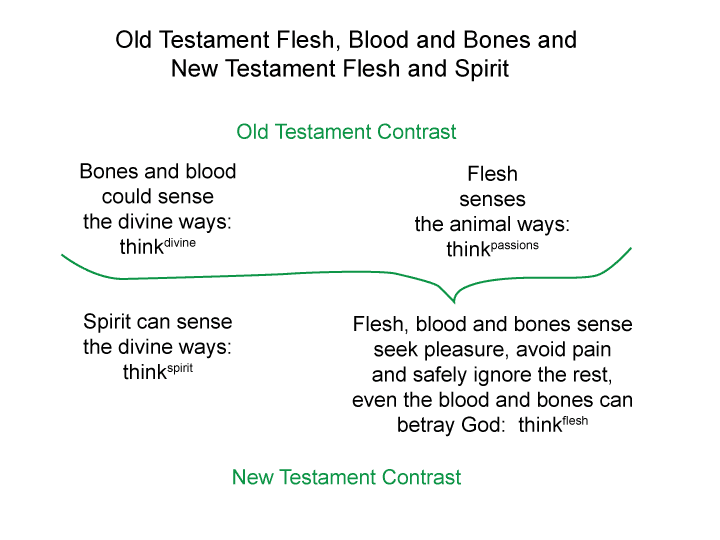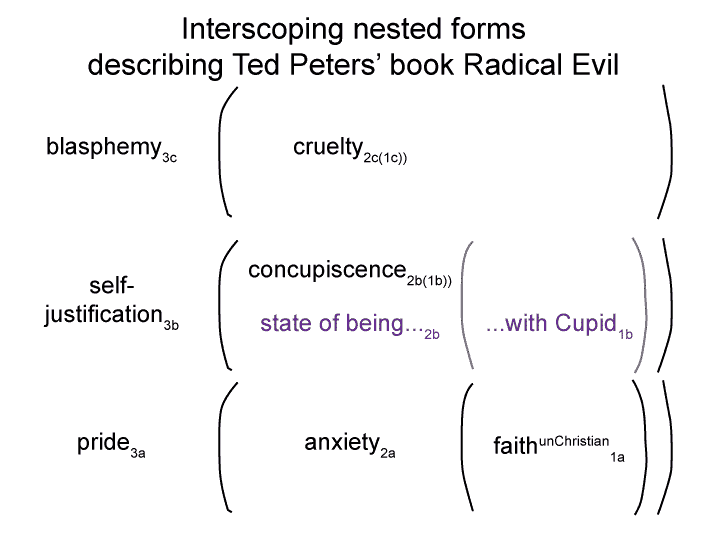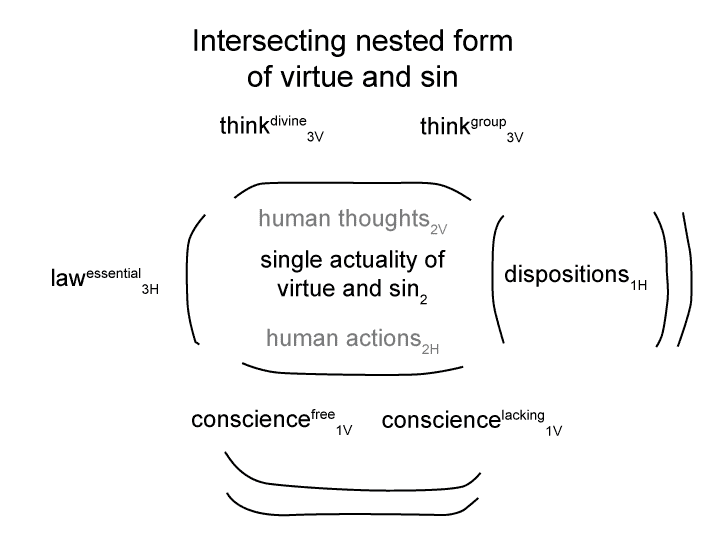Man and Sin by Piet Schoonenberg (1964) 2.3 AN
[St. Paul contrasts the ‘flesh’ and the ‘spirit’. The ‘flesh’ appears similar to the animal mind. It is unable to understand the things of God.
[What about ‘the blood and bones’?
Are these able to understand (or at least spiritually sense) the intentions of God?
In the the early Old Testament days, the answer was ‘yes’.
Don’t you feel it in your bones? Does it make your blood run hot or cold?
From the perspective of the New Testament, blood and bones are inadequate because they are constructed within the human to support the human.
Previously, one could sense the divine through the ‘blood and bones’, but not now.
The malleability of speech-alone talk deadens even these senses.]
The spiritual person judges everything. God is revealed to man through the spirit.
Man and Sin by Piet Schoonenberg (1964) 2.3 AM
Summary of text [comment] pages 80 and 81
[In certain ways, the word ‘flesh’ in the New Testament subsumes ‘flesh, blood and bones’ in the Old Testament. In other ways, it does not.
We are ‘flesh, blood and bones’ and Christ himself is ‘spirit’. But, Christ is also ‘flesh, blood and bones’.]
Man and Sin by Piet Schoonenberg (1964) 2.3 AL
Summary of text [comment] pages 80 and 81
In the Old Testament, ‘flesh’ is opposed to ‘blood and bones’.
Flesh and bones designates the whole person.
The New Testament presents a different opposition: ‘Flesh’ is opposed to ‘spirit’.
This opposition does not overlay exactly with the ‘flesh as opposed to bones’ terminology of the Old Testament.
Man and Sin by Piet Schoonenberg (1964) 2.3 AJ
Summary of text [comment] page 80
‘Evil attitudes and dispositions’ allow us to appreciate what is involved with the Scripture’s use of the words ‘flesh’, ‘concupiscence’, ‘bondage under the devil’ and ‘bondage under sin’.
[These all describe actuality emerging from possibility.
Ted Peter’s 1994 book Radical Evil portrays this. His work has already been analyzed with the nested forms.
Concupiscence belongs to the situation level of an interscope precisely as actuality emerging from and situating possibility (that is, concupiscence2(1)).
Indeed, the origin of the word ‘concupiscence’ is ‘the state of being2 with Cupid1’.
The complete situation level of the interscoping form follows:
Self-justification3b(the state of being…2b( potential …with Cupid1b))]
Man and Sin by Piet Schoonenberg (1964) 2.3 AH
Summary of text [comment] page 80
An evil attitude accompanies sinful action, combining with our inability for the good.
Every sin produces a persistent attitude that further consolidates sinful drives and inclinations. Persistent attitudes resist personal integration. One’s powers, tendencies, instincts, and passions demand their own satisfactions, even at the expense of the total value of the individual and community.
Man and Sin by Piet Schoonenberg (1964) 2.3 AG
[A particular sinful act may be forgotten, but sinful attitudes remain. The sinful act substantiates the sinner’s normal context. The act habituates the sinner’s potential.
This will be reflected in the way the person recites what is good and what is bad.
As the human acts and thinks, the entire intersecting nested form alters.
As actions and thoughts emerge from and situate possibilities, the possibilities become more and more pronounced.
The dispositions become trained.
The conscience becomes more specified. I label this consciencespecified.
Murder emerges from and situates the attitude of hatred.
Impurity emerges from and situates the attitude of narcissism.]



